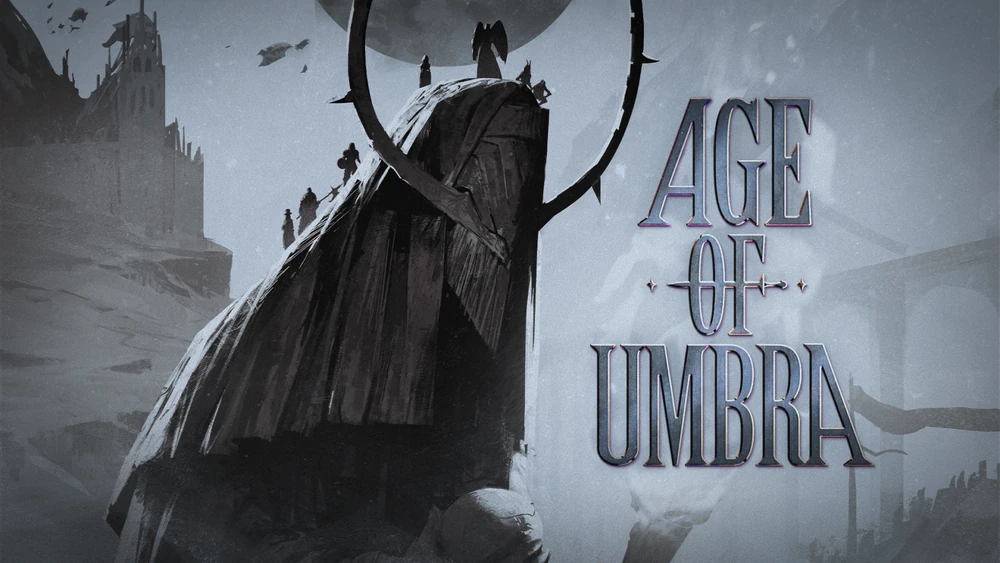(Author’s Note: I wrote this post a few weeks ago before the Campaign Four announcement. My revisions may reflect that knowledge, but most of this stayed the same. I also probably won’t write anything about the Campaign Four announcement otherwise because I don’t have a unique take. I defer to the internet on that)
I have read and watched a lot from the Daggerheart design team about how they imagined this game going. And there have even been a few one-shots to see the game designers’ unique styles. However, the Age of Umbra mini-series was our first chance to see Daggerheart in a more extended format run by one of the game designers.
This post is probably way too late with how I’m spacing things out, but I did watch it awhile ago. Here are a smattering of things I noticed from watching Age of Umbra.
Of course, there are spoilers everywhere.
Critical Role Abridged is great
Once upon a time, I could sit back, relax, and enjoy an episode of Critical Role. Despite being on the west coast, I rarely watched live, but I could give an episode my full attention.
Back in those days, I also ran regular, full-length sessions in various TTRPG campaigns.
Since then, there was a pandemic, and I have a few sets of tiny feet running around to take care of. I think I watched the first episode of Campaign Three, but I rapidly fell off. Critical Role Abridged has been incredible. I also watch it at 2x, so I’m basically watching an episode in about a half-hour, which feels about right.
I watched Age of Umbra mostly at 2x as well, but without the editing, I’m just not used to the pacing. I can fully appreciate how others might want to relish the Critical Role experience at a reasonable, original, 1x speed. However, it’s 2x or nothing for me, and I did really want to see Matt run this game.
Are campaign characters also expendable?
The cast was very willing to Risk It All and roll the dice to see if their characters would live or die. And they started on a winning streak.
They asked a very lethal campaign, and they knew that the dice could go against them. However, they pushed their luck too far, and then they started going down.
For a mini-series, sure, Risk It All. Sam’s roll at the end was particularly amusing: he knew all of the stakes, and yet, he rolled anyways just to play.
However, in a longer campaign, would the players still let the dice decide? After spending hundreds of hours developing their stories, could they leave it to chance?
Critical Role was one of the leaders in very character-driven styles of play with deep investment in their journey. Of course they can do it, but it will take some adaptation to their existing style.
I don’t have a reference for either of these, but I remember hearing two related takes about character death around the same time. Spenser mentioned that Daggerheart was very flexible about allowing players to choose their characters’ endings, and they didn’t want to stigmatize the decision to move on. Separately, Travis mentioned that he had intended to cycle through characters in Campaign 3 before getting stuck on Chetney for awhile.
Countdowns beat skill challenges
When I started playing 5e, I borrowed skill challenges from 4th edition. Skill challenges weren’t officially in 5e rules, but they were in the public consciousness, so I tried them out. Players roll until they get either three successes or three failures.
Skill challenges seemed like a good idea of way to work towards objectives things without relying on a single roll. However, they never really worked for me, and I didn’t know why.
I know countdowns and clocks from Blades in the Dark, and they work much better for me. It seems simple, but they’re surprisingly powerful for tracking progress and still leaving space for beats in-between.
I particularly enjoyed the final countdown when the party was trying to get back to Desperloch. They weren’t just breezing through with successes, and Matt was able to be creative to setup more challenges, create new complications and consequences, and just continue to build the tension as they got closer and closer.
Daggerheart works down to two players
In both my social life and in TTRPGs, I enjoy smaller parties. However, my general limit is at least three players to get enough cross-talk and different perspectives to feel really active. Age of Umbra showed me that the game can even work with fewer players.
Although it was sad to see players drop off, I enjoyed the show more as the party got smaller. I was getting deeper into the interactions and experiencing more of their journey.
Critical Role has always been big, and all of the players really do add something unique and valuable to the experience. However, it’s a lot to manage and share the spotlight. I’m not certain whether there’s a real comparison to make here between how Critical Role plays D&D compared to Daggerheart.
Final thoughts
Among the recent announcements was another Age of Umbra mini-series. I welcome all Daggerheart content, but it might take me awhile to get through another series. Although Daggerheart is a new system for Critical Role, the sessions felt more like a Matt Mercer/Critical Role thing rather than being distinguished by the system.
I previously read a take from the Angry GM that TTRPGs are unique among games because the system isn’t actually the game: it’s just the framework. The game is really created by the GM at the table, and with that mindset, it really highlights the GM’s style.
So we will see what season two of Age of Umbra brings!

Leave a Reply